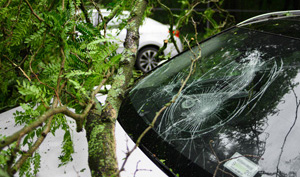[ad_1]

Traffic fatalities have spiked in recent years across the country, blamed on factors ranging from people driving while distracted by phones to people driving far in excess of speed limits. (Photo by Michael Jin on Unsplash)
People who routinely battle rush-hour traffic in Oklahoma City or Tulsa might naturally think that urban highways are far more dangerous than quiet backcountry roads.
But that’s not true.
According to a recent report produced by the Governors Highway Safety Association, nearly half of fatal crashes occur in rural areas where only about 19% of Americans live.
The release of the report, called “America’s Rural Roads: Beautiful and Deadly,” might have been especially timely, as traffic fatalities – both in urban and rural areas – have spiked in recent years, blamed on factors ranging from people driving while distracted by phones to people driving far in excess of speed limits.
According to the report, between 2016 and 2020 – the five most recent years of complete data – 85,002 people died in crashes on rural roads across the nation. In 2020 alone in Oklahoma, 169 crashes were reported daily on average across the state, including 75 with injuries. That year the state recorded an average of 1.8 fatalities daily, according to the Oklahoma Highway Safety Office.
Notably, while largely urban Oklahoma County recorded a crash rate of 0.46 per 5,000 population or 0.92 per 100 million vehicle miles traveled, or VMT, in 2020, rural Alfalfa County, with a population of only 5,699, recorded a crash rate of 2.63 per 5,000 population or 3.87 per 100 million VMT.
Another sparsely populated county, Beaver County, recorded a crash rate of 4.95 per 5,000 population or 3.81 per 100 million VMT. By comparison, Tulsa County, with a population of 669,279, recorded a crash rate of 0.56 per 5,000 residents, or 1.31 per 100 million VMT.
According to the GHSA report, various physical factors contribute to high rates of crashes in rural areas, including simpler road infrastructure and, often, poor maintenance. Risky driver behaviors, however, come in for a lot of blame. They include people not wearing seat belts, driving while impaired, speeding, and often paying more attention to phones than to roads.
“Roads are the backbone of rural America, connecting far-flung communities and families. While cities and urban areas have alternatives to driving, that’s not the case for people in rural areas,” noted GHSA Executive Director Jonathan Adkins. “Unfortunately, the dangerous and deadly driving behaviors that have increased during the pandemic have taken an oversized toll on rural residents. Making rural roads safer is essential for achieving the national goal of zero fatalities.”
Other details in the report included:
• During the five-year period assessed, 59,793 males died in rural road crashes, as compared to 25,151 females.
• Although fatalities on rural roads involving 14-15-year-old drivers declined between 2016 and 2019, they spiked in 2020, with rural fatalities for young teen drivers jumping by 57%.
• The risk to young drivers does not diminish significantly when they turn 18. Instead, people continue to be involved in fatal crashes at higher rates well into their 20S. Fatality rates then decline with age until the mid-40s when they begin to climb again. Adults 65 and older make up 19% of the rural population but accounted for 21% of rural road deaths during the years assessed.
[ad_2]
Source link








